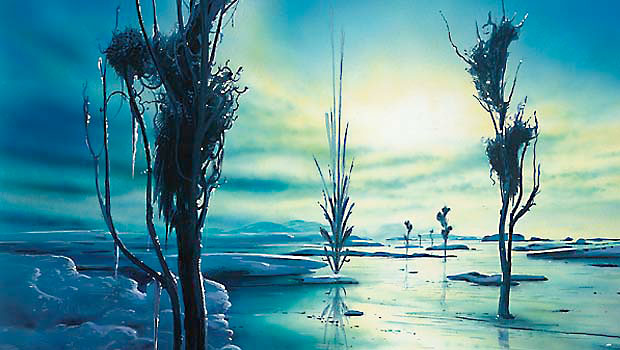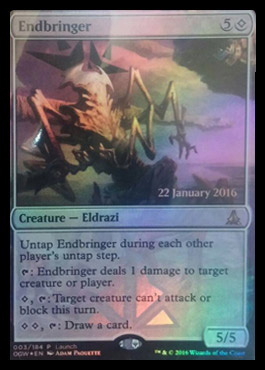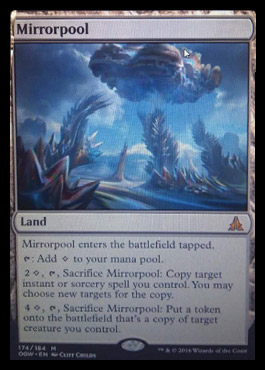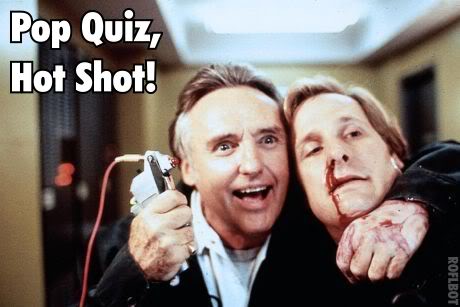[Greeting]
- [Acknowledgement of reader base]
- [Reference to last week’s article]
[Paragraph detailing plans for this article]
[Body]
- 1-10 paragraphs
- [Images]
[Closing Paragraph]
I want to talk about generic mana versus colorless mana now that the two terms can’t be used interchangeably, and I wanted to do it by making the article itself generic, but while that seemed meta and funny to me, it wouldn’t have come across and would have served to amuse only me, like an Easter egg hidden a little too well. I didn’t manage to make it happen, but I’m sure you won’t mind moving on, because there is a point I wanted to make this week: the differentiation between generic and colorless mana, a brand new concept, is going to matter. It’s going to matter a lot. So while the article itself won’t be generic, the subject matter is going to be. If you want a generic article I have a few sources I can point you to.
The Distinction
This is what it looks like when I dive right into the topic at hand without a lot of foreplay. Try and keep up, I guess. It’s foreign to me, too, but we’ll manage.
Why is there a distinction between colorless and generic mana now? It didn’t matter before. As I’m sure 100 percent of you know, we have had to make the distinction because of a new mana symbol that has appeared on some spoiled cards.
Look at Endbringer’s mana cost. Its converted mana cost is easy to suss out: it’s six. Endbringer costs six mana, five of which can be generic mana and one of which must be colorless mana; that is to say mana that originated from a colorless source. Generic refers to mana of any color used to pay non-specific mana costs like the little (5) in the circle we’re all used to. Like an Island putting a mana in your mana pool gives you a mana that can be used for blue or generic but not green, Island also gives you a mana that cannot be used for true colorless (non-generic) mana, which is denoted by the diamond mana symbol on this card in both the casting cost and two of the activated abilities. It’s not quite a sixth color, but it’s going to give you a little more trouble than you might imagine. Planning for it is going to be important.
The Impetus
Why do we care about this distinction? Well, for starters, Endbringer is stupid. I love this card. I want it inside my decks. I want it inside me. I am not sure if I will be able to find room in all of my decks for this card, so I’m really trying to manage my expectations, but the more I think about how much I want to play this card and maybe some others like it, the more I realize it may be a little trickier than I thought. Colorless mana may not be as simple to come by as generic mana, and when the distinction matters, you need to really re-evaluate everything.
Mirrorpool is a sexy, splashy EDH card that does everything I want a land to do. This plus a Crucible of Worlds is going to change the world. I was so doe-eyed over this card when it was first spoiled that I didn’t stop to consider how tricky this could be to activate. Five mana to make a clone is a bargain when it’s an ability on a land, but if we don’t have enough ways to make true colorless mana in our entire deck, we can’t play Mirrorpool at all. And I want to play Mirrorpool.
The Issue
Manabases in EDH are currently designed with accessing colored mana being pretty important. This may be a “basic land format,” where basics are just fine and cards like Burnished Hart, Solemn Simulacrum, Kodama’s Reach, and Myriad Landscape reward you for playing basic lands, and cards like Boundless Realms really reward you for playing basic lands, but we like access to the mana we need reliably. Players are so eager to make sure they get their colored mana that they don’t see a big issue with “risky” lands like Sejiri Refuge, Golgari Guildgate, and Gruul Turf. You notice players will play that last one, Gruul Turf, but aren’t super likely to play a card like Karoo which does the same thing but gives you a spare colorless rather than two colored mana, even in a mono-white deck? Players aren’t as in love with the Karoo effect as they are with having a land that taps for two colored mana every time they use it. This shows how important colored mana is to players. Whenever we need generic mana, Gruul Turf is good for two of them, helping us power out big spells like Genesis Wave or Primal Surge.
It’s trivial to generate generic mana, so we don’t think about how many sources we have, do we?
How many sources of true, non-generic, colorless mana do you have in your favorite EDH deck? Four? Five? Do you even know? Well, you probably have a Sol Ring, and maybe a Temple of the False God. Probably a few more. I’m going to estimate seven sources in a two-color deck, six for a three-color one, and maybe four for five-color lists. How close is this estimate?
The answer is a bit surprising. I started poking around online to find lists, mostly at random to try and get a decent sampling of what players are currently building. I found a Scion of the Ur-Dragon deck with one source (Maze’s End) right off the bat. Some Oloro decks ran six or seven with sources like Pristine Talisman, and some ran only three. I even found a few two-color decks that had zero ways to produce true colorless mana. Those decks were rare, but they exist.
Granted, the more likely a player was to be a tryhard with only one deck and load it up with fetches and shocks, the less likely they were to have sources of true colorless. Anyone can easily build with generating colorless in mind, but I think the point isn’t how easy it might be to fit more colorless sources in, but how hard it will be to take good, useful lands out to make room. Sure, we can upend our current mana bases and build them differently so we can jam one new card, but we probably don’t want to. Are there unobtrusive ways to still get the mana we need, not disrupt our lives too much, and have access to the true colorless mana we need? I have a few solutions—and there is money to be made.
Solution – Run Some Wastes
In a three-color deck, we already have cards like Burnished Hart, Solemn Simulacrum, Evolving Wilds, Myriad Landscape, etc. Jamming a few Wastes in there to tutor for means we can keep the same number of basics but have access to true colorless in the deck. We basically remove a few color-generating basics for a few Wastes.
Effectiveness as a Solution
This makes it harder for us to get colored mana. We could take every mana-producing land out and run 40 Wastes. Is that going to help us cast most of our spells? I hate the idea of weakening a deck’s ability to get colored mana. Otherwise, we’d run Rath’s Edge and Dust Bowl and Wasteland and Strip Mine and all the other utility lands in every deck. Unless your commander is an Eldrazi or a silver golem, you’re not going to want to take out colored basics for Wastes.
Is There Money to be Made?
Yes, actually. I feel like Wastes will be everywhere and under-valued initially, but looking at snow-covered lands and foil snow-covered lands, I feel like foil Wastes could be as much as $10 in a year if they become popular in EDH. They’re almost certain to be undervalued at peak supply and rotation, and those are the two times I’d start to look at them. I’ve harped on this in other articles, so I won’t belabor the point, but Wastes are a card for some situations, just not solving our Endbringer problem.
Solution – Colorless Ramp
We have a few lands and spells we could run that are such efficient ways to generate mana that we forgive the fact that the mana they give us is colorless.
Effectiveness as a Solution
These do the trick, however a lot of these have restrictions. Whether you can only spend the mana on spells like with Shrine of the Forsaken Gods, have to sacrifice the land like with Crystal Vein, or having to wait like with Temple of the False God, these lands come with strings attached. However, we play with a lot of these cards already, because the restrictions aren’t so great as to keep us from playing them in decks that don’t require the colorless mana to be non-generic. If we want to jam a Kozilek or Endbringer (and I do want to jam Endbringer), that just makes these lands even better.
Is There Money to be Made?
Eh. The problem is the cards that are good enough to be played already are already expensive. Repeated reprintings has crushed the price of Temple of the False God to around $0.50, but the foil is $25 and seems safe but not poised to go anywhere but glacially upward. The cards that are the least obtrusive new inclusions have the fewest financial opportunities. The cards with the most room to grow are not played much now for a reason, and we’d need a huge increase in adoption to move the needle. My desire to play with a Staff of Nin that’s also a 5/5 isn’t enough, I fear. These cards do the trick, but they’re kind of doing the trick already. Sol Ring isn’t going to spike because it helps us draw a card with a bulk rare Eldrazi, it’s going to go in decks because it’s Sol Ring.
Solution – Lands That Do It All
Do you want to summon and activate Endbringer with the same lands that can help you play the Prophet of Kruphix that makes him even stupider? It’s pretty simple, really.
Sexy, right?
Effectiveness as a Solution
Perfection. These give us two colors of mana and can also tap for true colorless, and don’t give us damage to boot. These can’t be tutored up with Burnished Hart like a Forest, fetched with a Misty Rainforest, or divined for with Cultivate, but these solve our problem and solve it good. If you have a Simic Guildgate, Thornwood Falls, or some other land that’s not super exciting but is in the deck because it’s cheap, taps for mana of two of your colors, and doesn’t deal you damage, you have a card to take out. Pain lands deal damage to you, but that rarely matters. The number of times I’ve lost games of EDH to my life total being reduced to zero pale in comparison to the number of times I’ve been milled, killed by commander damage when I had over 100 life, been hit with a quadrillion copies of Zealous Conscripts, or lost to Laboratory Maniac. A pain land is “calibrated” for a 20-life format, so when you think about it, Yavimaya Coast deals about half a damage in EDH terms. I’ll pay half a life to get an entire mana any day.
Is There Money to be Made?
Yup. These were already a pretty good buy and these are a cheap solution for EDH decks. For a while I thought “check lands” were my go-to non-basic, two-colored land. The problem there is that there is a wild price divergence going on.
It’s a little difficult to tout this cycle as the “answer” when there is such a price divergence going on. One has been reprinted much, much more often than the other, but you see my point. Jam a Sunpetal Grove all you want; I used to buy these for a buck cash from players before they stopped selling at all on TCGplayer for me. Enough players are fine playing guildgates and gain lands that come into play tapped that the fact that these sometimes don’t come into play tapped seems trivial.
Guildgates are durdly. Karoos don’t tap for colorless (except for actual Karoo). Shocks are expensive, and if you have them you’re playing them already and know they’re worth it. Too many utility lands like Alchemist’s Refuge dilute your ability to produce colored mana reliably, and even gold-star lands like ABU duals can’t get you the true colorless you need. Pain lands are perfect here. If only you could run more than one in a Vorel deck.
This is the graph for an Origins foil. It’s under $3 with a lot of potential. There is the risk of even more reprints, true, but with core sets being a thing of the past, it’s less likely that we will see another printing. Most likely, the mana needs of each individual set will be covered by something new. For now, these cards are the cheapest they’re ever going to be and there are a lot of them in binders. If you can get these for buylist (cash is king no matter where you go), it’s pretty tough to lose. There is very little downside to adopting these in EDH and the number of lands each deck wants goes up precipitously depending on the number of colors it is. A two-color deck can only run one pain land, but a three-color deck can run three, and a five-color deck can run ten. Will it want to? I guess that all depends on how badly it wants to activate Mirrorpool and not Maze’s End.
It remains to be seen whether the few “true colorless” cards are going to be a significant price driver in EDH. What is known is that with the pain lands being historically affordable and historically available and less likely than ever to be reprinted soon, these are a great target. Pain lands are generic. But that’s what we want.











